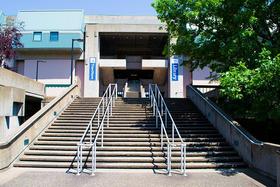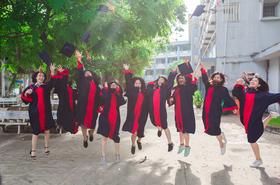- The University of Minnesota Rochester is a public college in Rochester, Minnesota. It is part of the University of Minnesota system and focuses primarily on general health sciences. It was formally established by an act of the state legislature in December 2006.
School Highlights
University of Minnesota-Rochester serves 656 students (92% of students are full-time).
The college's student-teacher ratio of 7:1 is lower than the state community college average of 22:1.
Minority enrollment is 50% of the student body (majority Black and Asian), which is more than the state average of 42%.
Quick Facts (2025-26)
- Enrollment: 656 students
- In-state tuition: $13,056
- Out-state tuition: $13,056
- Acceptance Rate: 80%
- Student-teacher ratio: 7:1
- Minority enrollment: 50%
- Source: Integrated Postsecondary Education Data System (IPEDS)
School Overview
The teacher population of 90 teachers has stayed relatively flat over five years.
University of Minnesota-Rochester
(MN) Community College Avg.
Carnegie Classification
Special Focus Four-Year: Other Health Professions Schools
Associate's Colleges: Mixed Transfer/Career & Technical-Mixed Traditional/Nontraditional
Institution Level
Less than 2 yrs
At least 2 but less than 4 years
Institution Control
Public
Public
Total Faculty
90 staff
171 staff
Student Body
The student population of University of Minnesota-Rochester has grown by 14% over five years.
The student-teacher ratio of 7:1 has stayed the same over five years.
The University of Minnesota-Rochester diversity score of 0.70 is more than the state average of 0.63. The school's diversity has grown by 23% over five years.
Total Enrollment
656 students
2,858 students
Student-Teacher Ratio
7:1
22:1
# Full-Time Students
603 students
1,050 students
# Part-Time Students
53 students
1,808 students
# Enrollment Undergraduate
656 students
420 students
# Full-Time Undergraduate Students
603 students
915 students
# Full-Time Graduate Students
n/a
38 students
# Part-Time Undergraduate Students
n/a
1,771 students
# Part-Time Graduate Students
n/a
12 students
Total Dormitory Capacity
n/a
116 students
% American Indian/Alaskan
n/a
1%
% Asian
14%
6%
% Hispanic
8%
8%
% Black
14%
15%
% White
50%
58%
% Hawaiian
8%
1%
% Two or more races
3%
4%
% Non Resident races
1%
1%
% Unknown races
2%
6%
Diversity Score
0.70
0.63
College Completion Rate (Students who graduate in less than 4 years)
n/a
34%
College Completion Rate (Students who graduate in 4 years or more than 4 years)
59%
57%
Average Graduate Earnings (10 Years)
$55,100
$36,900
Tuition and Acceptance Rate
The public in-state tuition of $13,056 is more than the state average of $5,489. The in-state tuition has stayed relatively flat over four years.
The public out-state tuition of $13,056 is more than the state average of $6,145. The out-state tuition has stayed relatively flat over four years.
In-State Tuition Fees
$13,056
$5,489
Out-State Tuition Fees
$13,056
$6,145
% Students Receiving Some Financial Aid
88%
89%
Median Debt for Graduates
$19,500
$12,264
Median Debt for Dropouts
$8,985
$6,750
Acceptance Rate
80%
94%
SAT Total Avg.
1,790
1,790
SAT Reading
625
625
SAT Math
600
600
SAT Writing
565
565
ACT Total Avg.
82
79
ACT Composite
25
24
ACT English
24
24
ACT Math
25
23
ACT Writing
8
8
Source: 2024 (or latest year available) Integrated Postsecondary Education Data System (IPEDS)
School Notes
- School Mascot: Rockie The Raptor
Frequently Asked Questions
How much does University of Minnesota-Rochester cost?
University of Minnesota-Rochester's tuition is approximately $13,056 for In-State students and $13,056 for Out-State students.
What is the acceptance rate of University of Minnesota-Rochester?
The acceptance rate of University of Minnesota-Rochester is 80%, which is lower than the state average of 94%.
In what neighborhood is University of Minnesota-Rochester located?
University of Minnesota-Rochester is located in the Downtown neighborhood of Rochester, MN.
Recent Articles

The Rise of Technical and Vocational Training in 2025
Explore the 2025 surge in technical and vocational training—enrollment, policy, costs, and why this path is gaining ground for students and parents.

Stackable Credentials: How Community Colleges Advance Careers
Discover how community colleges use stackable credentials to build career pathways, boost earnings, and enable lifelong learning in 2025.

High-Paying Jobs You Can Get with a Community College Degree
Discover top high-paying careers you can launch in 2025 with a community college (associate) degree and high-growth credentials in tech, healthcare and trades.









